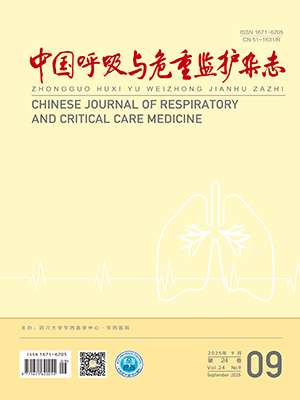| 1. |
Keith RL, Miller YE.Lung cancer chemoprevention:current status and future prospects.Nat Rev Clin Oncol, 2013, 10:334-343.
|
| 2. |
She J, Yang P, Hong QY, et al.Lung cancer in China:challenges and interventions.Chest, 2013, 143:1117-1126.
|
| 3. |
Chen WS, Li Z, Bai L, et al.NF-kappaB, a mediator for lung carcinogenesis and a target for lung cancer prevention and therapy.Front Biosci, 2012, 16:1172-1185.
|
| 4. |
Hoffmann A, Natoli G, Ghosh G.Transcriptional regulation via the NF-κB signaling module.Oncogene, 2006, 25:6706-6716.
|
| 5. |
Pando MP, Verma IM.Signal-dependent and-independent degradation of free and NF-kappa B bound IkappaBalpha.J Biol Chem, 2000, 275:21278-21286.
|
| 6. |
Viatour P, Merville MP, Bours V, et al.Phosphorylation of NF-kappaB and IkappaB proteins:implications in cancer and inflammation.Trends Biochem Sci, 2005, 30:43-52.
|
| 7. |
吴春婷, 赵佳晖, 闫树凤, 等.针对核因子-κB p65基因的短发夹干扰RNA逆转录病毒载体构建与鉴定.现代生物医学进展, 2009, 9:1462-1464.
|
| 8. |
郭红娟, 朱光发.核因子-κB信号通路在肺癌中的作用.国际呼吸杂志, 2013, 33:1402-1406.
|
| 9. |
Cheah SC, Appleton DR, Lee ST, et al.Panduratin A inhibits the growth of A549 cells through induction of apoptosis and inhibition of NF-kappaB translocation.Molecules, 2011, 16:2583-2598.
|
| 10. |
Xua DQ, Lillicob SG, Barnettb MW, et al.USP18 restricts PRRSV growth through alteration of nuclear translocation of NF-κB p65 and p50 in MARC-145 cells.Virus Res, 2012, 169:264-267.
|
| 11. |
Sun SC.The noncanonical NF-κB pathway.Immunol Rev, 2012, 246:125-140.
|
| 12. |
Dimitrakopoulos FI, Antonacopoulou AG, Kottorou A, et al.NSCLC and the alternative pathway of NF-κB:uncovering an unknown relation.Virchows Arch, 2012, 460:515-523.
|
| 13. |
Vaughan C, Mohanraj L, Singh S, et al.Human oncoprotein MDM2 up-regulates expression of NF-κB2 precursor p100 conferring a survival advantage to lung cells.Genes Cancer, 2011, 2:943-955.
|
| 14. |
White KL, Vierkant RA, Phelan CM, et al.Polymorphisms in NF-kappaB inhibitors and risk of epithelial ovarian cancer.BMC Cancer, 2009, 9:170.
|
| 15. |
Scheibel M, Klein B, Merkle H, et al.IkappaB beta is an essential co-activator for LPS-induced IL-1beta transcription in vivo.J Exp Med, 2010, 207:2621-2630.
|
| 16. |
Hu YH, Yu LJ, Shao ED, et al.The regulating role of mutant IkappaBalpha in expression of TIMP-2 and MMP-9 in human glioblastoma multiform.Chin Med J (Engl), 2009, 122:205-211.
|
| 17. |
He Y, Zhang H, Yin J, et al.IkappaB alpha gene promoter polymorphisms are associated with hepatocarcinogenesis in patients infected with hepatitis B virus genotype C.Carcinogenesis, 2009, 30:1916-1922.
|




